Hello Yoga enthusiasts! Welcome to another blog where we will discuss the fascinating offerings of Yoga. It is widely believed that positivity around you multiplies when you share it with others. This philosophy applies to the knowledge of Yoga as well. Your knowledge of Yoga strengthens and flourishes when you share it with others.
Many people accept Yoga as a healthy way of living and are eager to learn its methods and techniques. Many people are waiting to take their first plunge into Yoga, and you can be their guide. If you have a thorough knowledge of Yoga and have been practicing it regularly, you can start your Yoga class with help from this blog.
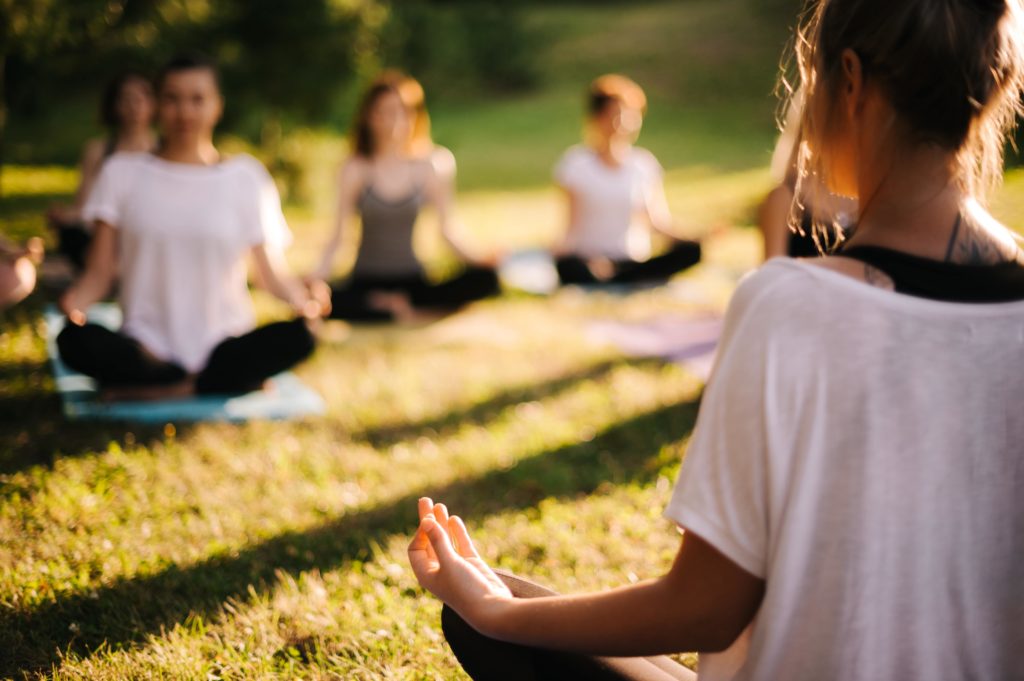
You may know all your Yoga theory, but its practical application may be complex. To have a successful Yoga class, begin with something easy, effective, and fun to perform. A practical Yoga class is the perfect blend of adequate warm-up, easy Yoga asanas for the whole body, and a suitable cool-down routine.
Here are ten beginner Yoga postures to have an introduction Yoga class for your students.
1. Balasana
Balasana, or the child’s pose, is a great way to stretch all your muscles without causing them any fatigue. The pose is a great way to rest your body in between two Yoga postures without completely relaxing your muscles. Balasana is the perfect posture to warm your muscles up before a healthy Yoga session.
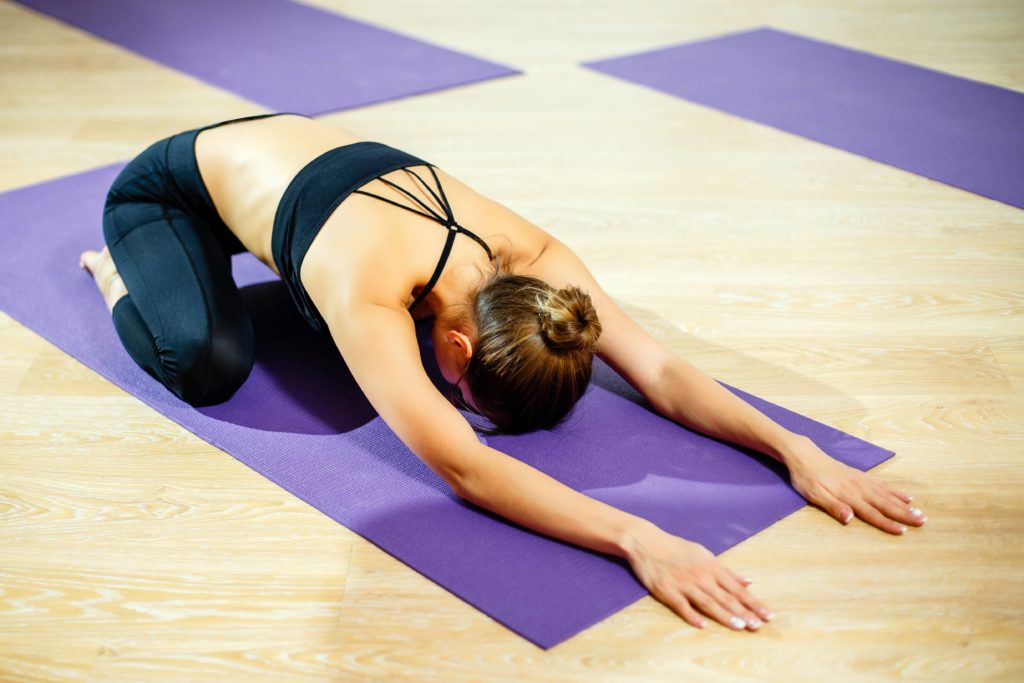
To perform Balasana.
- Kneel on the floor and sit on your heels which are spread apart. Keep the tips of your big toes touching one another.
- Keep some distance between your knees to make a ‘V’ shape of your thighs.
- Bend forward from your waist till your head touches the ground.
- Rest your tummy between your thighs, and your chest should press against your knees.
- Bend your neck, so your chin is closer to your throat, and rest your head on the floor.
- You may stretch your arms in the front, with your elbows straightened and your palms pressing against the floor.
- Alternatively, rest your arms beside your hips and let your shoulders fall naturally.
Balasana may seem like an easy and relaxing Yoga posture, but it can be physically demanding to perform. Balasana prepares your body for a rigorous workout by stretching and strengthening all your muscles.
2. Utkatasana
Utkatasana is a standing Yoga pose, also known as the chair pose. It is a great way to stretch your upper body and warm up before a sweaty Yoga session. Utkatasana is also effective in increasing body heat and getting rid of muscular rigidity before exercise.
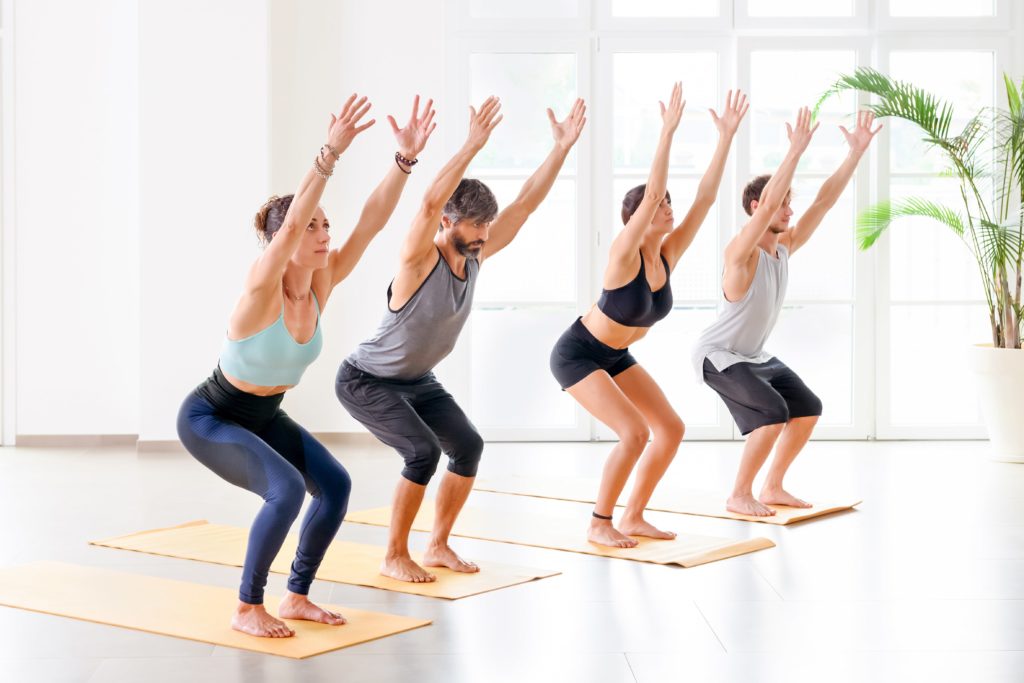
To perform Utkatasana
- Stand straight on the floor with your back erect, your shoulders drawn backward, and your gaze fixed in the front.
- Spread your feet so that they are in line with the corresponding shoulder. Your palms should be facing the outer side of the corresponding thigh.
- Bend your knees to align your thighs parallel to the floor.
- Lean forward so that your trunk forms a right angle with your thighs.
- Elevate your arms and stretch them towards the ceiling. Your palms must pace one another, and your arms should be parallel.
Utkatasan stimulates your cardiovascular activity and maintains a steady heart rate throughout your Yoga session. The pose is an excellent way to start working out on your thigh muscles and lower abdomen.
3. Hastapadasana
Hastapadasana is a standing forward bend that acts on your limb muscles and digestive organs. The Yoga posture enhances your physical stamina by stimulating your nervous system.
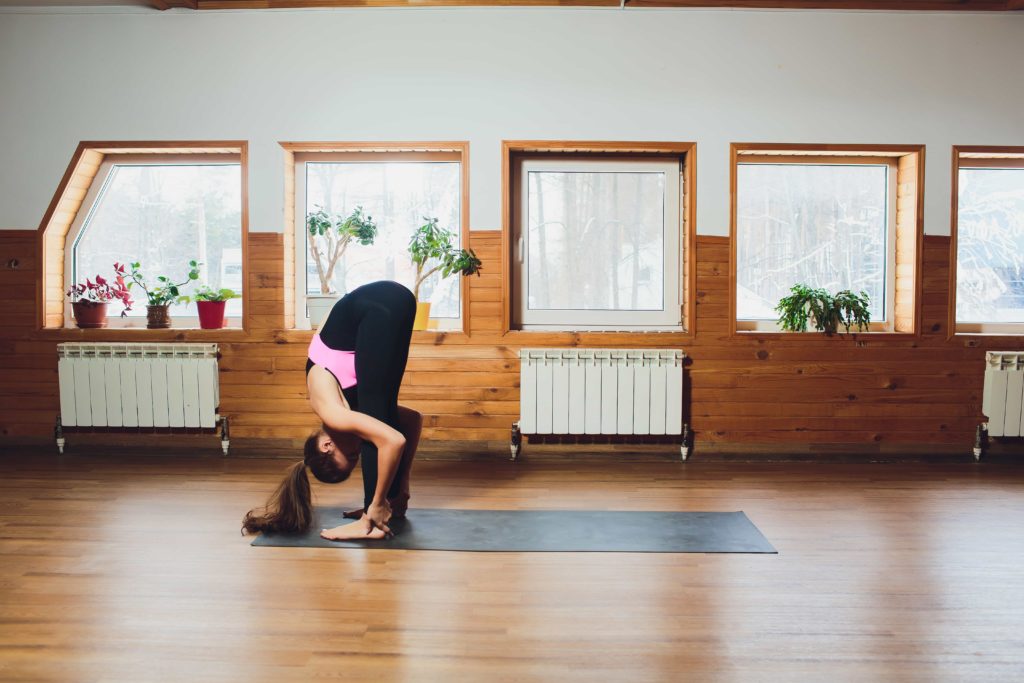
To perform Hastapadasana
- Stand straight on the floor or your Yoga mat with an erect spine and retracted shoulders.
- Avoid bending your elbows or knees, and look straight ahead.
- Inhale deeply while elevating your arms and bending slightly backward.
- Bring your arms forward as you exhale and bend forward from your waist.
- Touch both palms to the ground on either side of the feet. If you cannot do so, touch your toes or grasp your ankles or shins.
- Your head should rest in a neutral position between your knees, with your neck bent forward.
- Once you assume the final posture of Hastapadasana, press your feet firmly against the ground and tighten your knees for better support.
Hastapadasana is a suitable Yoga posture to begin a full-body workout or to tone your thighs.
4. Bhujangasana
The cobra pose, or Bhujangasana, is rightfully named since your body resembles a cobra ready to strike while performing this asana. Bhujangasana gives an excellent workout to your arm muscles and tones them.

To perform Bhujangasana
- Lie face-down so your chest, belly, trunk, and thighs touch the floor.
- Keep your hands by the side of your body and your neck tilted to one side.
- Bend both elbows and place the flat of your palms on the ground adjacent to your shoulders.
- Lift your chin and look straight ahead.
- Press your palms firmly against the floor and gradually elevate your upper body off the floor.
- Straighten your elbows, and arch your neck and spine backward.
- Extend your ankles so that the back of your feet touches the ground.
- Continue to remain in Bhujangasana for a count of 10 breaths.
Bhujangasana stretches your spinal muscles and also stimulates your intestinal muscles. Including the cobra pose in your beginners’ Yoga class is a great way to promote good metabolism.
5. Naukasana
The boat pose, or Naukasana, is a lying-down Yoga posture that works wonders on the abdominal wall muscles and digestive muscles and stimulates pelvic organs.
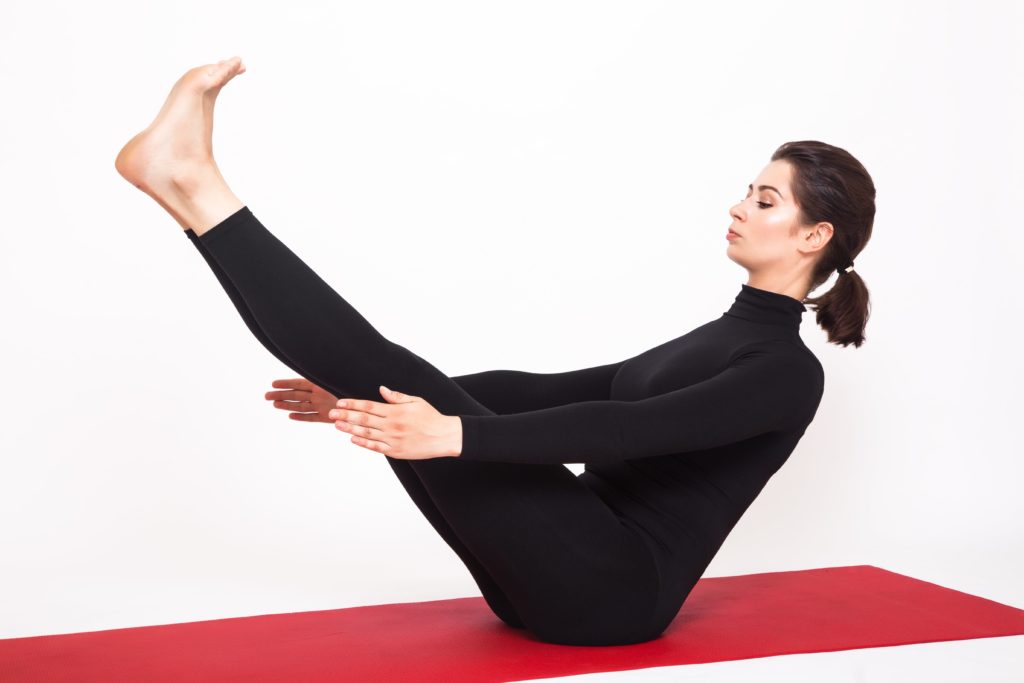
To perform Naukasana
- Lie on the floor and your arms beside your body, with your legs stretching in the front.
- Lift your limbs and chest off the ground together and balance your body weight on your buttocks.
- Your feet and shoulders must be level with one another.
- Stretch your arms in the front so that they point to your toes.
- Keep your knees and elbows straight, and continue regular breathing throughout Naukasana.
Naukasana is an excellent Yoga posture for abdominal toning and strengthening your thigh muscles.
6. Chakrasana
Chakrasana, or the wheel pose, acts on almost every muscle in the body.

To perform Chakrasana
- Lie down with your arms resting at the side, and your legs stretched in the front.
- Bend your legs from the knees and press your feet firmly against the ground. Align your feet in line with the corresponding shoulder.
- Bend your elbows, lift your arms and place both palms on the ground close to the shoulders.
- Balance your body weight equally on your palms and feet, and hoist your body off the floor.
- Allow your head to hang back naturally without straining your neck.
- In the final pose of Chakrasana, your back, neck, and limbs form an arch that resembles half a wheel.
Chakrasana stretches your limb muscles and helps to burn excess abdominal fat. The wheel pose is a great way to lose weight and stay healthy.
7. Salabhasana
Salabhasana is a lying-down Yoga posture that tones your abdominal muscles and hips. The asana is known as the locust pose because you align your body while performing the posture.

To perform Salabhasana
- Lie down with your chest and belly touching the floor.
- Keep your legs close together and relax your arms by the side of your body.
- Inhale deeply and elevate your head, neck, chest, and arms off the floor.
- Stretch your arms backward and your fingers towards your feet.
- Elevate your legs simultaneously and extend your ankles to point your toes back.
- Keep your head, palms, and feet at the same level during Salabhasana.
Continue slow and regular breathing throughout Salabhasana and relax your body after 5-10 breaths.
8. Adho Mukha Svanasana
The downward dog pose, or Adho Mukha Svanasana, is a popular and highly beneficial Yoga posture. You mimic a dog stretching its limbs while performing Adho Mukha Svanasana, hence the downward dog pose.
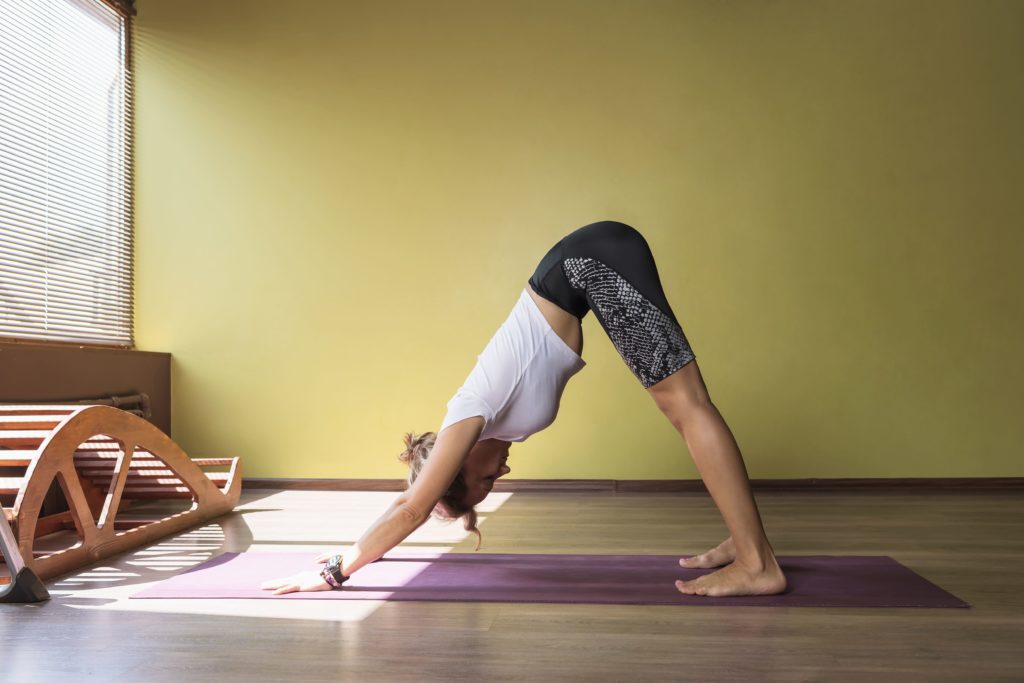
To perform Adho Mukha Svanasana
- Kneel and bend forward to rest your palms on the floor so that your chest and abdomen are parallel to the floor.
- Your knees and hips should be level with one another, with your palms placed slightly ahead of your shoulders.
- Balance your weight equally on your knees and palms and elevate your hips.
- Straighten your knees while trying to touch your feet completely to the ground.
- Once you support your body, shift your hips backward so that your head and neck are placed slightly behind your arms.
- Remain in Adho Mukha Svanasana for 5-10 breathing cycles.
Adho Mukha Svanasana strengthens your upper body and allows you to lose excess fat from your arms, shoulders, and chest. The pose is an excellent way to tone your core and strengthen your thighs.
9. Anjaneyasana
Anjaneyasana is the Yogic way to practice lunges, which are popular among fitness-conscious folks. The low lung pose offers a great lower-body workout and also stimulates better cardiac activity.
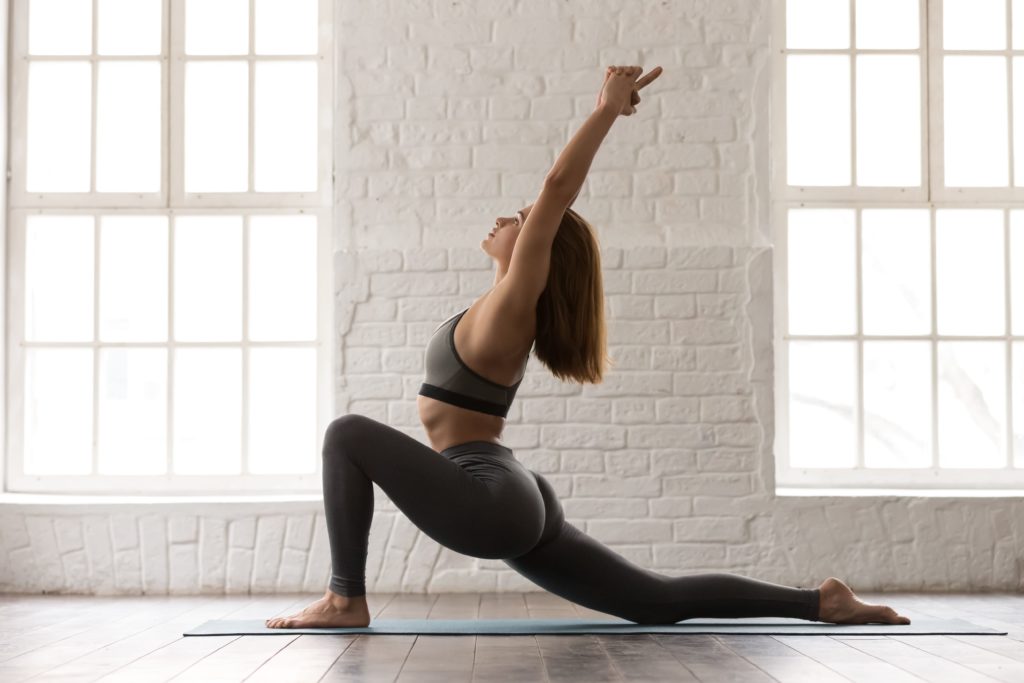
To perform Anjanesyana
- Begin by going into Adho Mukha Svanasana (refer to the instructions in the above section), and then take your right foot forward.
- Place your right foot between your palms and level your knee and foot with each other.
- Lower your left leg on the floor, so your left shin and knee touch the floor. Slide your left leg behind till you feel a good stretch to your thighs and groins.
- Get your torso upright while elevating your arms till your fingers point to the ceiling. Stretch your arms backward, and also bend slightly backward from your waist.
- It is important to remember to keep your arms parallel without touching one another.
Anjaneyasana gives an excellent full-body stretch to you and cools you down after an exhausting Yoga session. You can repeat the Yoga posture with your other foot to relax any sore or stiff muscles.
10. Savasana
Savasana is the ultimate cooldown asana to conclude a successful Yoga session. Savasana is rightfully known as the corpse pose because you lie down without the slightest movement like a corpse. The pose may seem easy, but it involves a specific sequence of body movements.
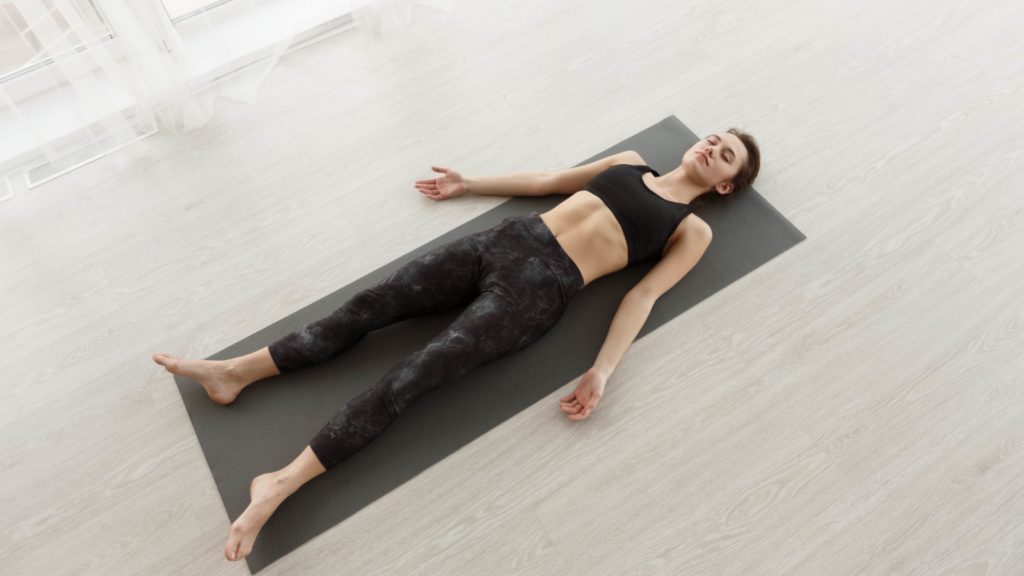
To perform Savasana
- Seat yourself on the floor comfortably and gradually bend both knees until they are close to your chest.
- Bend backward and rest your body on your forearms as you straighten your knees and spread your feet slightly apart.
- Lower yourself entirely on the floor and lie down in a relaxed position.
- Your entire body must be completely relaxed while in Savasana.
- Focus on your breathing, and feel your heartbeat return to normal.
- Remain in Savasana for 5 minutes, and slowly get into a seated position by rolling over to one side and supporting your body well.
Another Yoga posture that is a ‘must have’ for a fun Yoga session is the very effective and popular Surya Namaskar. READ our blog on how to perform the Surya Namaskar and its many health benefits.
3-5 repetitions of ten Yoga postures is all that you need to have a successful Yoga class. Ensure that the combination of Yoga postures in your training session gives a good stretch to every body muscle. The best Yoga session is the one that provides a healthy full-body workout. Remember to include resting and water breaks during your Yoga session between subsequent Yoga postures. Yoga asanas will not be very effective on a physique that is fatigued and overexerted due to exercise.
Learning Yoga is a joyful experience, but sharing your Yoga knowledge with others is a happiness that cannot be expressed in words! Do you want to be a highly skillful and appreciated Yoga teacher? You can start today with some help from our Yoga sequencing for beginners.







